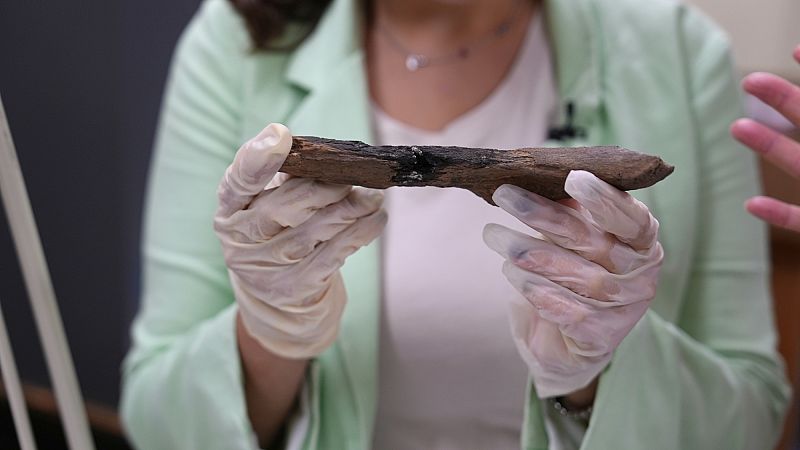Featured
- Get link
- X
- Other Apps
Bone Tools: Our Ancestors Mastered Them a Million Years Sooner Than We Thought

Researchers have unearthed what appears to be the oldest identified implements made from bones, which extends our understanding of when these were utilized by approximately one million years.
This discovery indicates that early humans possessed more sophisticated tool-making abilities than was earlier believed.
These 27 fossilized remains, crafted into tools approximately 1.5 million years ago, are reshaping our understanding of early human technological development.
The collection discovered in Tanzania's Olduvai Gorge offers the earliest proof of intentional creation of bone tools by early hominids.
Crafted from the robust leg bones of elephants and hippopotamuses, these tools indicate that our ancient ancestors employed more sophisticated tool sets than earlier believed.
Scientists have established that basic stone instruments date back 3.3 million years. However, bone tools were thought to have been invented significantly later.
The well-preserved artifacts, some measuring up to 40 centimetres, show clear signs of intentional shaping.
At the time they were created, our ancestors lived a precarious hunter-gatherer existence on the plans of the Serengeti region, a landscape teeming with wildlife.
They created them utilizing a method akin to the production of stone tools, where tiny flakes were detached to create keen edges, showcasing advanced skillfulness.
Dr Christine Adhiambo Ogola is an archaeologist at the National Museum of Kenya. She was not involved in the study.
"Bone tools are not very common because they decompose. So, there is a chance that they have always been there and many of them. But because they decompose, what is left mostly is stone tools,” she said.
These instruments were probably employed as hand-held axes for dismembering animal carcasses, mainly scavenged remnants of elephants and hippos.
Unlike later tools, they were not mounted on handles or used as spears.
Researchers say the uniform selection of bones, primarily large leg bones from specific animals, suggests early humans deliberately sought out the best raw materials for making tools.
"We can’t precisely determine when they began utilizing bone tools since it’s possible that such tools were employed even earlier. Given what we know about chimpanzees using bone implements, it suggests that human beings at a similar stage of evolution might have also utilized these tools," explained Ogola.
Consider this from a temporal perspective. When did humans reach that stage? It might have been as far back as 4-5 million years ago.
The discovery dates back more than a million years before Homo sapiens emerged. At the time, at least three different hominin species lived in the region, including Homo erectus, Homo habilis, and Paranthropus boisei.
While it is unclear which species made the tools, researchers say the findings suggest early humans were not simply reacting to their environment but actively planning their tool-making and selecting materials with a clear purpose in mind.
The discovery, published in the journal Nature, provides new insight into the evolving intelligence and adaptability of early human ancestors.
- Get link
- X
- Other Apps
Popular Posts
Unmasking Misinformation: Journalist’s Quest for Verified Truth (International Edition)
- Get link
- X
- Other Apps
PTA Clarifies: X Disruption (Formerly Twitter) Unrelated to Local Internet Filtering – International Edition
- Get link
- X
- Other Apps
Comments
Post a Comment